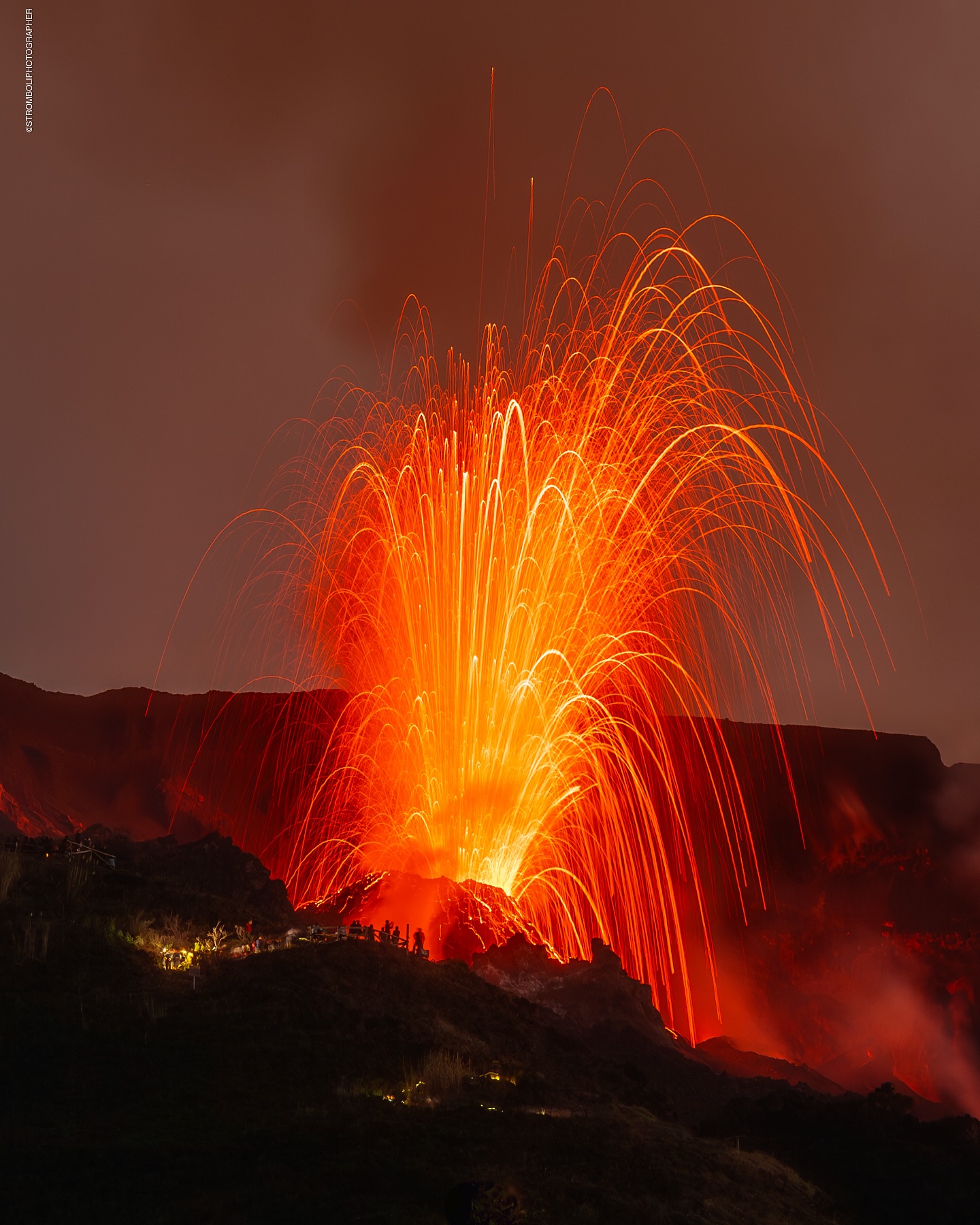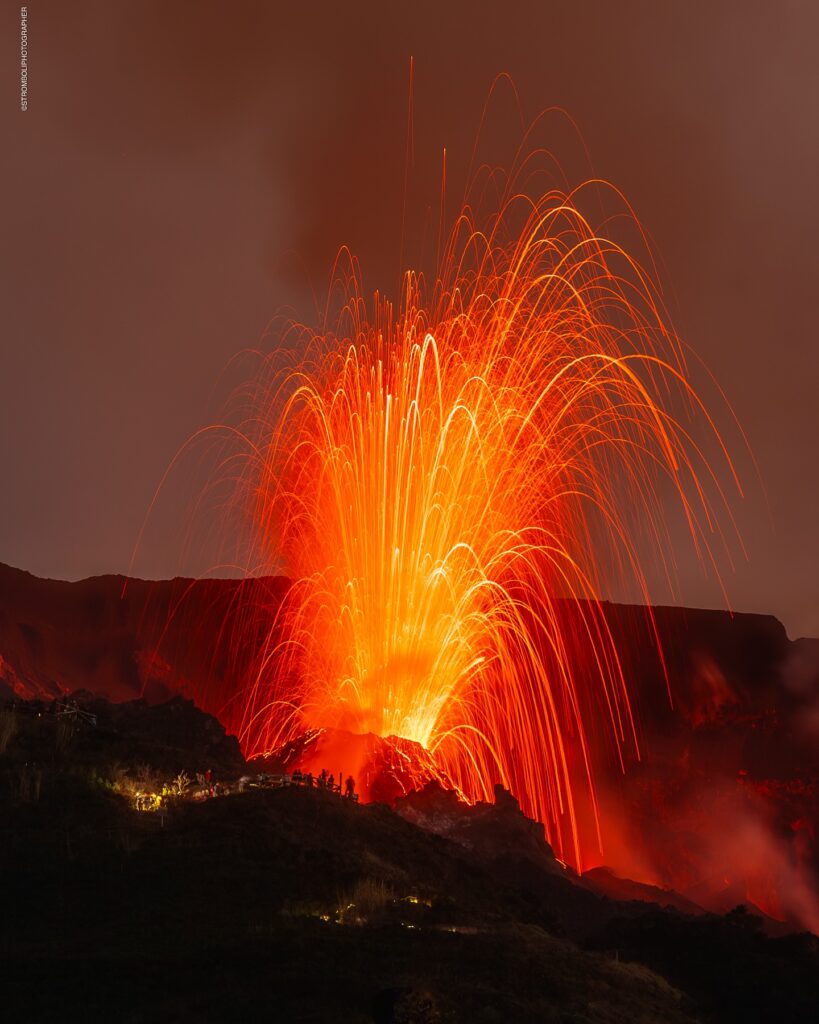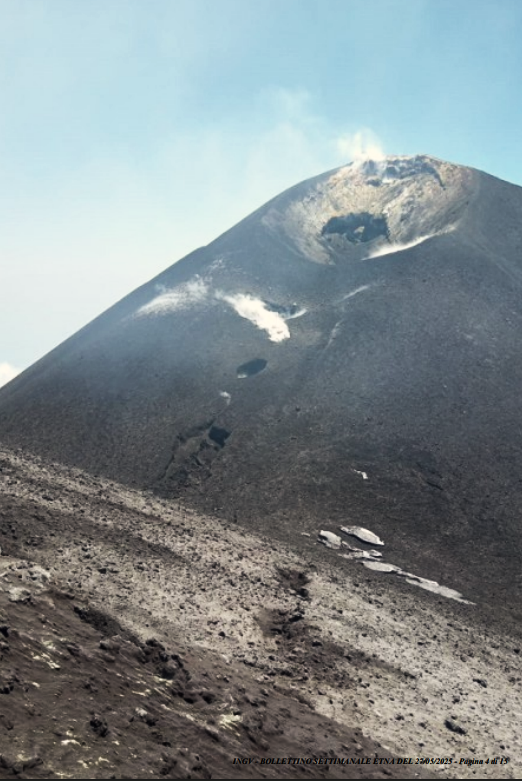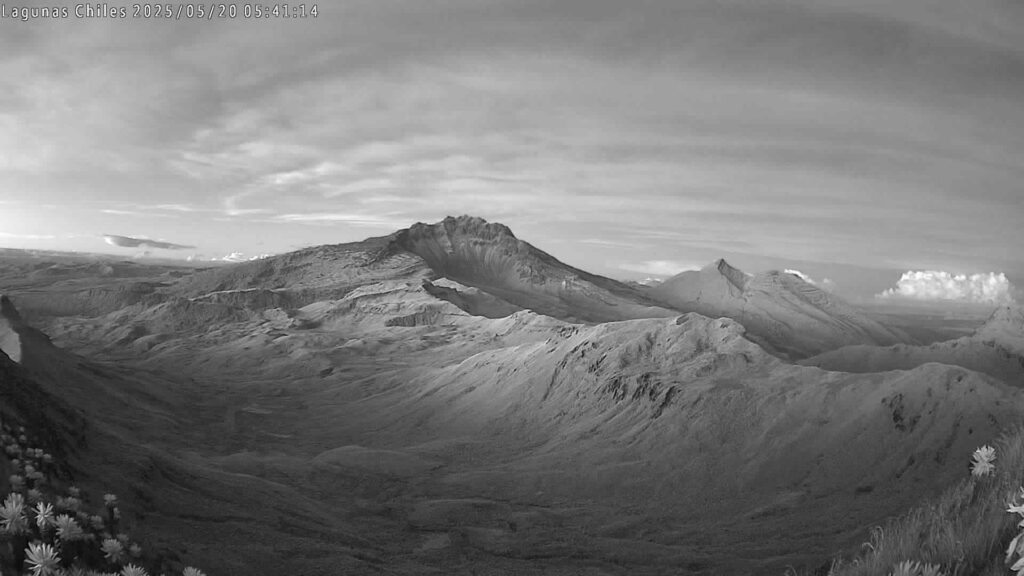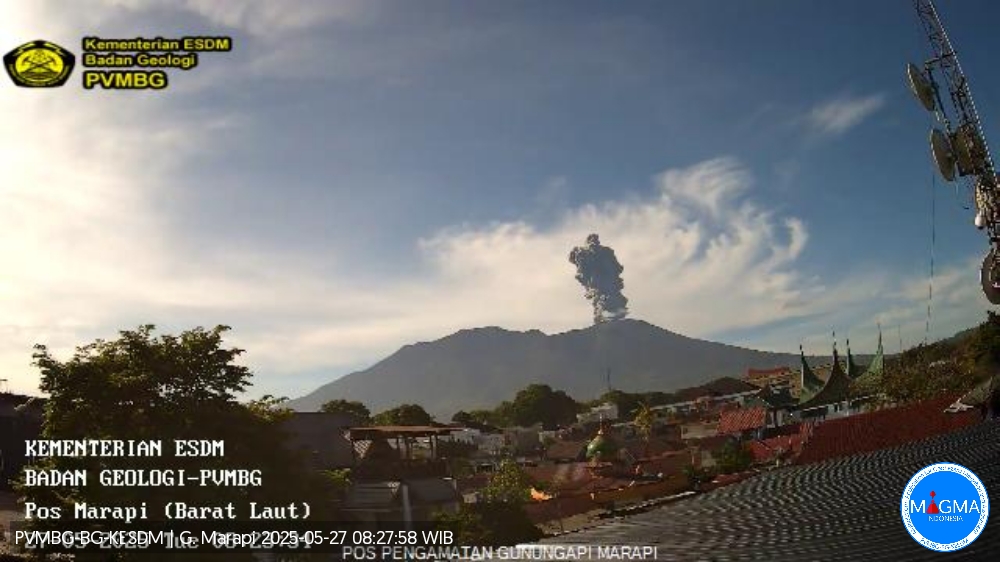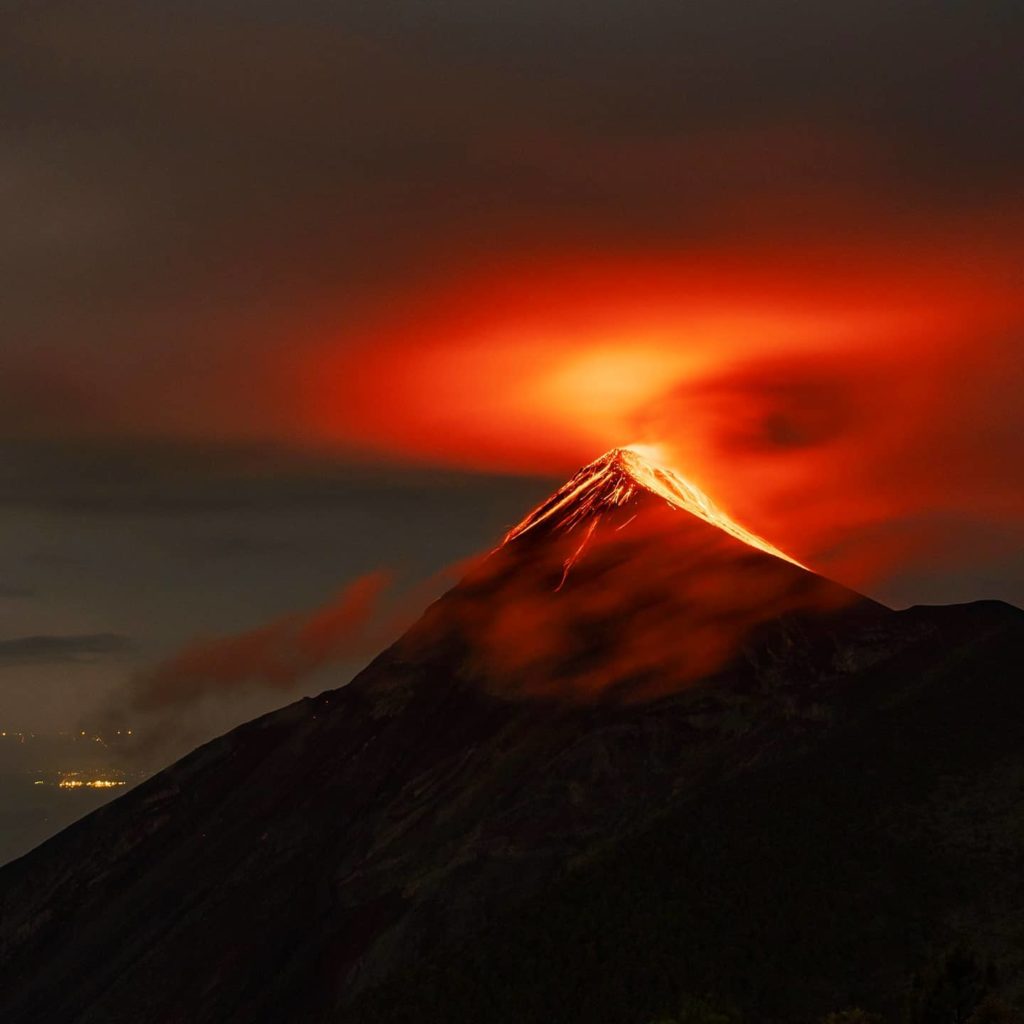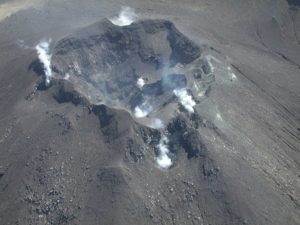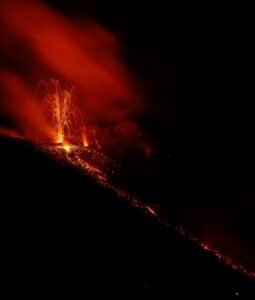May 28 , 2025.
Italy , Stromboli :
WEEKLY BULLETIN, from May 19, 2025, to May 25, 2025 (issue date May 27, 2025).
ACTIVITY STATUS SUMMARY
Based on monitoring data, the following is highlighted:
1) VOLCANOLOGICAL OBSERVATIONS: During this period, ordinary Strombolian eruptive activity was observed. The total hourly frequency ranged between average values (8-12 events/h). The intensity of the explosions was low and medium in the North and South-Central crater areas.
2) SEISMOLOGICAL: The monitored seismic parameters do not show any significant variations.
3) GROUND DEFORMATION: The ground deformation monitoring networks do not show any significant variations. 4) GEOCHEMISTRY: SO2 flux: at an average level
Soil CO2 flux from the Pizzo area (STR02): no updates.
C/S ratio in the plume: high to very high values.
Dissolved helium isotope ratio (R/Ra) in the thermal aquifer: high values (updated on May 6).
Soil CO2 flux in the San Bartolo area: average values.
Soil CO2 flux in the Scari area: average-high values.
5) SATELLITE OBSERVATIONS: Thermal activity observed by satellite in the summit area was generally low.
VOLCANOLOGICAL OBSERVATIONS
During the observation period, Stromboli’s eruptive activity was characterized by analyzing images recorded by INGV-OE surveillance cameras located at an altitude of 190 m (SCT-SCV) and at Punta dei Corvi (SPCT). The explosive activity was produced mainly by four eruptive vents located in the northern area of the crater and at least two vents located in the central-southern area.
Due to adverse weather conditions, visibility of the crater terrace on May 20 was insufficient to accurately describe the eruptive activity.
Observations of explosive activity captured by surveillance cameras
In the North (N) crater area, four active vents were observed, producing low-intensity explosive activity (less than 80 m in height) and sometimes medium-intensity explosive activity (less than 150 m in height). The ejected products consisted mainly of coarse materials (bombs and lapilli). The average explosion frequency ranged from 4 to 9 events/h.
In the South-Central (SC) area, explosive activity was produced by at least two vents. The explosions were mainly of low and medium intensity, emitting fine materials (ash) sometimes mixed with coarse materials (lapilli and bombs). The average explosion frequency ranged from less than 1 to 5 events/h.
Source : INGV
Photo : Stromboli stati d’animo / Sebastiano Cannavo
Italy / Sicily , Etna :
WEEKLY BULLETIN, from May 19, 2025 to May 25, 2025 (issue date May 27, 2025).
ACTIVITY STATUS SUMMARY
Based on monitoring data, the following is highlighted:
1) VOLCANOLOGICAL OBSERVATIONS: Degassing activity at variable rates from the summit craters.
2) SEISMOLOGICAL OBSERVATIONS: No seismic activity due to fracturing with Ml>=2.0. Tremor amplitude at medium-low level.
3) INFRASOUND: Low infrasound activity.
4) GROUND DEFORMATION: Ground deformation monitoring networks show no significant variations.
5) GEOCHEMISTRY: SO2 flux: at a medium-low level
Soil CO2 flux: medium-low values.
Partial pressure of dissolved CO2 in groundwater: no significant changes.
Helium isotope ratio at peripheral sites: last updated on May 19, at medium-high values.
6) SATELLITE OBSERVATIONS: Thermal activity observed by satellite in the summit area was generally low.
VOLCANOLOGICAL OBSERVATIONS
During the week, monitoring of Mount Etna’s volcanic activity was carried out through the analysis of images from the INGV-Osservatorio Etneo (INGV-OE) surveillance camera network. Regarding the summit craters, degassing activity of varying intensity was observed from the Bocca Nuova crater (BN), the Northeast crater (CNE), and the Voragine crater (VOR). In particular, the Northeast crater is characterized by intense impulsive degassing.
On May 22, a survey was carried out in the summit area to conduct field observations. The photo shows the vents that formed during the eruptive activity of May 12, 2025.
Volcanic Tremor:
During the week in question, the average amplitude of volcanic tremor remained mainly at medium-low values. The centroids of the tremor sources are located in an area between the Northeast Crater (NEC) and the Southeast Crater (SEC), at a depth varying between 1,500 and 2,800 meters above mean sea level.
Source et photo : INGV
Colombia , Chiles / Cerro Negro :
San Juan de Pasto, May 27, 2025, 6:20 a.m.
Regarding the monitoring of the activity of the Chiles-Cerro Negro Volcanic Complex (CVCCN), the Colombian Geological Survey (SGC), an entity affiliated with the Ministry of Mines and Energy, reports that:
From May 20 to 26, 2025, the main variations in the monitored parameters compared to the previous week were:
• The number of events decreased from 2,800 to 2,013; however, a slight increase in the energy released was recorded. The majority of events were associated with rock fractures within the volcanic edifice.
• Most of the earthquakes occurred 1.7 km west of the summit of Chiles Volcano and at depths between 1.1 and 4.0 km (reference level at 4,700 m). This group included the most energetic event, with a magnitude of 2.5, located 1.6 km west-northwest of the summit of Chiles Volcano, at a depth of 3.6 km. The remaining seismic activity was scattered throughout the CVCCN’s area of influence.
• Analysis of information obtained from satellite sensors and ground stations continues to indicate variations related to deformation processes in the volcanic zone.
Based on the assessment and correlation of monitored parameters, the SGC recommends closely monitoring developments through weekly bulletins and other information published through our official channels, as well as instructions from local and departmental authorities and the National Disaster Risk Management Unit (UNGRD).
Volcanic activity remains on yellow alert: active volcano with changes in the baseline behavior of monitored parameters and other manifestations.
Source et photo : SGC.
Indonesia , Marapi :
Mount Marapi erupted on Tuesday, May 27, 2025, at 8:22 WIB. The observed ash column was ± 1,100 m above the summit (± 3,991 m above sea level). The ash column was white to gray, with a strong intensity, oriented toward the southeast. This eruption was recorded by seismograph with a maximum amplitude of 7.9 mm and a duration of 59 seconds.
VOLCANO OBSERVATORY NOTICE FOR AVIATION – VONA
Issued : May 27 , 2025
Volcano : Marapi (261140)
Current Aviation Colour Code : ORANGE
Previous Aviation Colour Code : orange
Source : Marapi Volcano Observatory
Notice Number : 2025MAR047
Volcano Location : S 0 deg 22 min 52 sec E 100 deg 28 min 23 sec
Area : West Sumatra, Indonesia
Summit Elevation : 9251 FT (2891 M)
Volcanic Activity Summary :
Eruption with volcanic ash cloud at 01h22 UTC (08h22 local).
Volcanic Cloud Height :
Best estimate of ash-cloud top is around 12771 FT (3991 M) above sea level or 3520 FT (1100 M) above summit. May be higher than what can be observed clearly. Source of height data: ground observer.
Other Volcanic Cloud Information :
Ash cloud moving to southeast. Volcanic ash is observed to be white to gray. The intensity of volcanic ash is observed to be thick.
Remarks :
Eruption recorded on seismogram with maximum amplitude 7.9 mm and maximum duration 59 second.
Source et photo : Magma Indonésie .
Guatemala , Fuego :
Weather conditions: Clear.
Wind: East.
Precipitation: 28.0 mm.
Activity:
The Fuego Volcano Observatory reports volcanic activity characterized by low-level degassing, with white fumaroles (water vapor and other magmatic gases) reaching up to 100 meters above the crater and moving westward. No explosions have been observed or heard since yesterday morning; infrasound sensors recorded very weak events, inaudible in the surrounding communities.
Do not approach the crater; explosions can occur at any time and cause burns and serious or even fatal injuries due to the expulsion of high-temperature gases and ash, as well as the fall of incandescent ballistic projections up to 500 meters from the crater. In the afternoon and evening, rains could cause lahars in the various ravines of the volcano.
Source : Insivumeh .
Photo : Diego Rizzo ( 2021)

